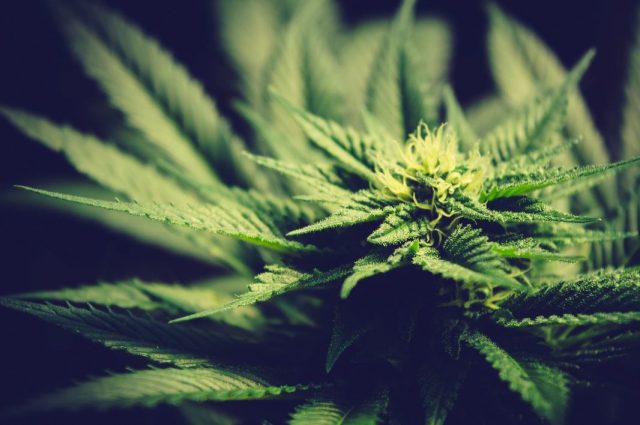Cannabis is going mainstream. After a century in the shadows and the stigma of generations raised on Reefer Madness, marijuana is finally being rediscovered. The much-maligned plant is now opening the eyes of researchers to the potential benefits. Medical marijuana is now accepted almost everywhere. Hospitals in Israel administer cannabis to patients on-site with marijuana vaporization devices. And it is vaporization devices that represent the future.
States such as New York and West Virginia now allow the use of medical marijuana but also impose conditions on patients. Specifically, conditions on how medical cannabis patients ingest marijuana. Edibles, topical oils, and pills are allowed. While patients cannot smoke marijuana, vaporization is allowed. Portable, hand-held vaporizers deliver the active ingredients of the marijuana plant without the byproducts of combustion.
Smoking is bad for you. That is common knowledge. It does not matter what substance you smoke, it is bad for you. If you light organic spinach on fire, the smoke will be bad for you. On top of that, smoking is wasteful. Much of the desired ingredients go up in smoke, literally. However, vaporization extracts and contains the active ingredients without combustion.
How Vaporizers Work
Plant materials such as herbs, wood, cannabis, etc all have an ignition temperature. Once heated to the ignition temperature, the material ignites beginning combustion. Combustion is a series of incredibly rapid chemical reactions creating a massive number of toxic byproducts. In addition, each material has a boiling temperature at which point the active ingredients convert into gaseous form. Also known as vapor. The boiling temperature equals what we call the vaporization temperature.
A vaporizer works by heating herbal material to the point of vaporization but not reaching ignition temperature. The vaporization temperature can be increased or decreased to speed or slow the rate of vaporization. By controlling the temperature of a vaporizer, the user controls the vapor output.
The vaporizer consists of a battery, a heating chamber, and a mouthpiece. A battery powers a heating element, also known as a coil. The heat is then used to heat the chamber where the herb is located. The vapor is then drawn from the mouthpiece.
Ideally, the herb does not come into direct contact with the metal heating coil. Instead, the coil heats a ceramic dish to avoid burning. The airflow from the mouthpiece spreads the heat for a blend of convection and conduction heating. The vapor itself is comprised of the active ingredients. As a result, the aerosol is more potent than smoke. Vaporizing cannabis delivers a stronger dose than smoking.
Why Use A Vaporizer?
The primary advantage of using a vaporizer is avoiding combustion. The secondary advantage is efficiency. Cannabis products are expensive. Smoking is wasteful. Vaporization contains the aerosol in the vapor device until it is inhaled. In addition, a good quality vaporizer will fully exhaust the ingredients. A vaporizer is also easy to use and maintain. Ultimately, the technology of a vaporizer renders smoking obsolete.
Dr. Sanjay Gupta’s documentary, Weed, follows his journey from a skeptic to a believer in the potential benefits of cannabis. When asked about the best way to ingest cannabis, Gupta is quoted as saying vaporization is the best method. Edibles absorb unevenly because the digestive system is a harsh environment. Inhalation is regarded as a fast, efficient delivery system.
Looking at the advantages of using a vaporizer, it suddenly becomes very clear why numerous medical marijuana states allow patients to vaporize cannabis, but not allow patients to smoke cannabis.
The Market Sees A Bright Future For Vaporization
According to a vaporizer market research study published in February 2020, estimates project a 25% growth rate over the next seven years. The estimate expects the vaporization device business to reach $26 billion by 2027. The numbers make sense. Legalization is expected to continue to expand in America and throughout the world. In fact, legalizing recreational marijuana will be on the ballot in several states in 2020.
Part of the calculation for the anticipated growth in the use of marijuana vaporizers includes celebrity involvement. Rapper Snoop Dog already boasts his own brand of vapor devices. Many celebrities are well-known cannabis activists. For example, Bill Maher and Seth Rogan. However, the biggest force behind marijuana legalization and destigmatization is a generation of young people that are open to the possibilities of the potential benefits.
The younger generations do not hold the same negative views of weed that their parents did. Combine that with the fact that medical science is shrugging off generations of negative perception and is now doing real science. The pendulum has swung.
The Future Of Cannabis
The research into the benefits of medical cannabis for stress and anxiety or pain management is ongoing. Pain management may be the most obvious but there is also research into potential benefits treating cancer. Glaucoma patients frequently receive medical marijuana licenses because THC has been shown to reduce intraocular pressure in the eye.
Cannabis is not just about marijuana. The hemp plant produces CBD, a cannabinoid that does not cause a high. The links between CBD and mental health are being studied. Early research indicates that CBD may benefit people suffering from depression, anxiety, or other mood disorders. CBD is said to have anti-inflammatory properties, which could be helpful as we are seeing a dramatic increase in auto-immune conditions in our society.
At the end of the day, we are just scratching the surface of the potential of cannabis. Many suggest cannabis be used to replace opioids as a means of reducing the horrendous death tolls of the opioid crisis. Whatever the possible uses of cannabis, vaporization may represent the best means of accessing whatever benefits there may be.


